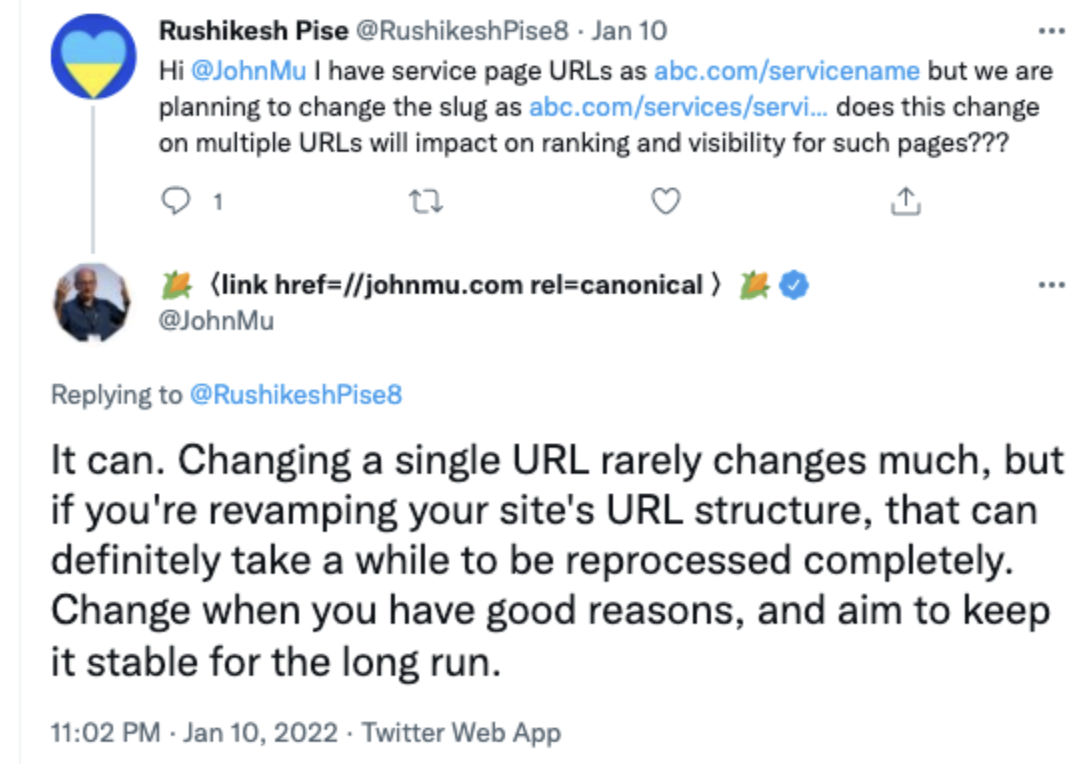Change is good, right? Not always. When it comes to your website, changing URLs can actually do more harm than good for your organic rankings. It’s always important to consider the pros and cons before you start rewriting URLs.
If and when you decide to change URLs, there are a couple steps you can take to help lessen the effects it can have on your organic traffic. The key is having a well-thought-out plan in place before taking action. Keep in mind that even the most well-executed URL changes are going to take time for Google to process, resulting in fluctuations of organic traffic.
In this post we’ll discuss circumstances under which you may find yourself changing URLs. Then we’ll go over why stable URLs are critical for SEO. Finally we’ll dive into how to help safeguard your rankings if you decide you absolutely need to change up your URLs.
Why would URLs change?
There are a few common scenarios on why you may be considering changing URLs:
You’re undergoing a rebranding effort
Your business name is changing
You’re creating a new website
Your product or service offerings are changing
Most of the examples above involve changing more than a handful of URLs. You may need to completely dissolve a subfolder or change your domain name. But let’s say you just want to change the URL of a single page. Is that cause for concern? Yes and no.
For example, you run a popular e-commerce site, dogswearpants.com. Once upon a time, you wrote a blog post called “The Best Dog Capris of 2011” on the URL dogswearpants.com/blog/best-dog-capris-2011. It did so well in organic search, despite only getting 1 or 2 backlinks. Since then it’s gotten outdated. You want to refresh the post with the hottest trends in canine couture and change the URL from dogswearpants.com/blog/best-dog-capris-2011 to something more evergreen like dogswearpants.com/blog/best-dog-capris. You think that having the old year in the URL might dissuade someone from clicking, but you’re worried there will be negative consequences if you change the URL.
What to do?
First, weigh the pros and cons. One con is that if you change the URL, the page will take an initial hit in traffic as Google needs to recrawl the page. However, organic traffic is likely to bounce back, particularly because the updated page will be much more useful than it used to be. Also, you’re just changing one page, not hundreds. You’re planning on keeping the URL stable for the foreseeable future and it hasn’t had many backlinks anyway. You’re probably okay to go ahead and change the URL (following our checklist at the end of this post).
John Mueller of Google says “changing a single URL rarely changes much:”

The bottom line: You should only change URLs when you have a good reason for doing so, and you should keep them stable for as long as possible. Don’t change URLs for aesthetic reasons or to try and stuff a couple of keywords in there. It will hurt more than it helps.
Why are stable URLs important for SEO?
Google cares about stability when it comes to URLs. If a URL is altered even just a little bit, search engines view it as a brand-new URL. For example, https://dogswearpants.com is seen as a different URL than https://www.dogswearpants.com and resources.dogswearpants.com.
Changing sitewide URLs and implementing hundreds of redirects means Google will need to recrawl your site, which can take time. Keyword use in URLs helps slightly for ranking, but don’t create or change URLs just to add optimized keywords - this can do more harm than good. It’s common for website owners to want to change their URLs for aesthetic reasons, but we often caution against this if it’s not completely necessary.
Checklist for URL changes
When you change a page’s URL, you essentially create a brand new page, even if the old page redirects to the new version. When changing established URLs, the traffic does not bounce back 100% and you essentially start from scratch, which can take time.
Follow this checklist if you need to change URLs:
Consider how the content is changing. Will the new page have the same content as the old page? If it is different, prepare for the initial drop in organic traffic.
Implement 301 redirect from the old page to the new page. Don’t be afraid to provide a 404 Not Found error if there is no comparable live page, but make sure your 404 page is useful so you don’t frustrate users (a site search box can help with that).
Avoid daisy chain redirects. Create redirects directly from one page to the final destination.
Update internal links to the new page. Make sure links across your site that go to an old page are updated to the new page, especially links in the navigation and footer.
Add a new XML sitemap or update the existing one. Resubmit your sitemap in Google Search Console so Google can crawl the new URLs.
Making decisions about when to change URLs can be tricky, especially if you’re planning on a site migration or redesign. Contact us today to see how Workshop Digital can help.

